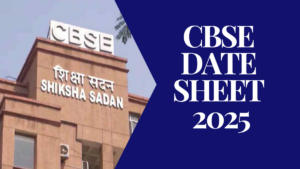Table of Contents

Ncert Solutions For Class 11 Chemistry Chapter 4 in English
Class 11 chemistry NCERT solutions: Adda247 provides NCERT solutions for class 11 chemistry chapter 4. The NCERT Solutions provided here will enhance the concepts of the students, as well as suggest alternative methods to solve particular problems to the teachers.
These NCERT Solutions Class 11 chemistry chapter 4 are presented in a very simple language so that you can understand the basic of chemistry with ease. These NCERT Solutions class 11 Chemistry cover chapters 1 to 14 with all important questions and answers explained in a detailed way.
Students can download the Class 111 Chemistry NCERT Solutions, which they want to study with the comfort of their house.
The solutions available are in depth and simplest way. Thus will help the students beyond examination marks. This will help them develop a core understanding of the subject. Because this subject demands to understand rather than just memorizing solutions of Class 11 Chemistry. Here below we are providing you with the overview of all the chemistry Class 11 Chapters that are there in the NCERT textbook.
At Adda247, students can access chapter wise solutions to get their doubts clarified instantly. The faculty had provided both online and offline mode of Solutions which can be used free of cost.
Benefits of Solutions of NCERT class 11 Chemistry:
- NCERT Solutions for Class 11 is helpful to solve questions from other reference books too.
- NCERT Solutions for class 11 Chemistry will assist students to cross check answers and prepare for the exams in a strategic way.
The students can access the solutions anywhere while browsing web easily. The solutions are very precise and accurate.
NCERT Solutions for Class 11 Chemistry Chapter – 4: Chemical Bonding and Molecular Structure
NCERT Solutions for Class 11 Chapter 4 Chemical Bonding and Molecular Structure are provided in this article for CBSE students. Comprehensive answers to every question listed in the NCERT Solutions Class 11 Chemistry textbook can be found here. The solutions are drafted by the experts of Adda247 to help students who are preparing for the final exam.
Chemistry is the basic of things which we see around in our environment and is known as the “central science”. As chemistry is a mandatory subject for the students, it requires more focus from the exam perspective. The solutions provided here are equipped with all the basic details with questions which might appear in exam. Furthermore, these NCERT Solutions can also be downloaded in a PDF format.
The questions in NCERT Solution Chemistry Class 11 covered in this exercise assist students in gaining insight into the chapter, so that they can have in-depth knowledge about the topic and excel in their upcoming exams.
Chapter 4 of this subject comprises of a topic about Chemical Bonding and Molecular Structure. Our expert teacher provide the most reliable study material that helps in understanding the topic of chemical bonding Class 11 thoroughly without any ambiguities.
The Chemical Class 11 NCERT Solution provided by Adda247 presents a detailed explanation about a wide range of concepts that includes atomic structures, concepts of chemistry, states of matter, and so on. We assist students with the latest NCERT Solutions for Class 11 Chemistry by maintaining a comprehensive approach to the topic. Our expert teachers have streamlined all crucial concepts by providing shortcut techniques and methods that would help students grasp these topics more easily.
The Chemistry Class 11 NCERT Solutions PDF book facilitated by us to help students prepare for the exam has another unique feature that it can be downloaded anytime and can be accessed according to their convenience.
[sso_enhancement_lead_form_manual title=”Download Full PDF of Class 11 Chemistry Chapter 4 ” button =”Download Now” pdf =”/jobs/wp-content/uploads/2021/06/29170621/chapter-4-11th.pdf”]
Important questions of NCERT Solutions of Chemistry Class 11 Chapter 4
Question :1 Explain the formation of a chemical bond.
Answer:
A chemical bond is defined as an attractive force that holds the constituent (atoms, ions etc.) together in a chemical species.
Various theories have been suggested for the formation of chemical bonds such as the electronic theory, valence shell electron pair repulsion theory, valence bond theory and molecular orbital theory.
A chemical bond formation is attributed to the tendency of a system to attain stability. It was observed that the inertness of noble gases was because of their full filled outermost orbitals.
Hence, it was postulated that the elements having incomplete outermost she’ll are unstable. Atoms therefore combine with each other and complete their respective octet or fillets to attain the stable configuration of the nearest noble gases. This combination can occur either by sharing of electrons or by transferring one or more electrons from one atom to another. The chemical bond formed as a result of sharing of electrons between atoms is called a covalent bond. An ionic bond is formed as a result of transfer of electrons from one atom to another.
Question :2 Define octet rule. Write it’s significant and limitations.
Answer:
The octet rule refers to the tendency of atoms to prefer to have eight electrons in the valence shell. When atoms have fewer than eight electrons, they tend to react and form more stable compounds. It was postulated by Kossel & Lewis. The atoms complete their octet by either loosing or gaining of electrons. They do so to attain the nearest noble gas stable electronic configuration.
The octet rule successfully explained the formation of chemical bonds depending upon the nature of the element.
Limitations of the octet theory:
1) The main limitation to the rule is hydrogen, which is at its lowest energy when it has two electrons in its valence shell. Helium (He) is similar in that it, too, only has room for two electrons in its only valence shell.
Hydrogen and helium have only one electron shell. The first shell has only one s orbital and no p orbital, so it holds only two electrons. Therefore, these elements are most stable when they have two electrons.
2) Second limitation are aluminum and boron, which can function well with six valence electrons. Consider BF3. The boron shares its three electrons with three fluorine atoms. The fluorine atoms follow the octet rule, but boron has only six electrons. Most elements to the left of the carbon group have so few valence electrons that they are in the same situation as boron: they are electron deficient.
3) In Period 3, the elements on the right side of the periodic table have empty d orbitals. The d orbitals may accept electrons, allowing elements like sulfur and phosphorus to have more than an octet.
Compounds such as PCl5 and SF6 can form. These compounds have 10 and 12 electrons around their central atoms, respectively.
Xenon hexafluoride uses d-electrons to form more than an octet. This compound shows another exception: a noble gas compound.
4) The octet rule is not satisfied for all atoms in a molecule having an odd number of electrons. For example, NO2 do not satisfy the octet rule.
5) The rule failed to predict the shape and relative stability of molecules
Question :3 Write the favourable factors for the formation of ionic bond.
Answer:
An ionic bond is formed by the transfer of one or more electrons from one atom to another. Hence, the formation of ionic bonds depends upon the ease with which neutral atoms can lose or gain electrons. Bond formation also depends upon the lattice energy of the compound formed.
Hence, favourable factors for ionic bond formation are as follows :
- Low ionization enthalpy of metal atoms.
- High electron gain enthalpy of a non metal.
- High lattice energy of the compound formed.
Question :4 Define the bond length.
Answer: Bond length is defined as the equilibrium distance between the nuclei of two bonded atoms in a molecule.
Bond length are expressed in terms of Angstrom or picometer and are measured by spectroscopic X – ray diffraction and electron-diffraction techniques.
In an ionic compound, the bond length is the sum of their consent radii(d = RA + rB)
Question : 5 Although both CO2 and H2O are triatomic molecules, the shape of H2O molecules is bent while that of CO2 is linear. Explain this on the basis of dipole moment.
Answer :
According to experimental results, the dipole moment of carbon dioxide is zero. This is possible only if the molecule is linear so that the dipole moment of C-O bonds are equal and opposite to each other.
Resultant = 0D
H2O, on the other hand, has a dipole moment value of 1.84 D. The value of the dipole moment suggests that the structure of H2O molecule is bent where the dipole moment of O-H bonds are unequal.
Question : 6 Write the significance/applications of dipole moment.
Answer:
In heteronuclear molecules, polarization arises due to difference in the electronegativities of the constituents of atoms. As a result, one end of the molecules acquire a positive charge while the other end becomes negative. Hence, a molecule is said to possess a dipole.
The product of the magnitude of the charge and the distance between the centres of positive – negative charges is called the dipole moment of the molecule. It is a vector quantity and is represented by an arrow with its tail at the positive centre and head pointing towards a negative centre.
Dipole moment = change x distance separation.
The SI unit of a dipole moment is esu.
1 esu = 3.335 x 10*-30 cm
Dipole moment is the measure of polarity of a bond. It is used to differentiate between polar and non-polar bonds since all non-polar molecules have zero dipole moments. It is also helpful in calculating the percentage ionic character of a molecule.
Question : 7 Define electronegativity. How does it differ from electron gain enthalpy?
Answer :
Electronegativity is the ability is an atom in a chemical compound to attract a bond pair of electrons towards itself.
Electronegativity of any given element is not constant. It varies according to the element to which it is bound. It is not a measurable quantity. It is only a relative number.
On the other hand, electron gain enthalpy is the enthalpy change that takes place when an electron is added to a neutral gaseous atom to form an anion. It can be negative or positive depending upon whether the electron is added or removed. An element has a constant value of the electron gain enthalpy that can be measured experimentally.
Question : 8 Explain with the help of suitable example polar covalent bond.
Answer :
When two dissimilar atoms having different electronegativities combine to form a covalent bond, the bond pair of electrons is not shared equally. The bond pair shift towards the nucleus of the atom having greater electronegativities As a result, electron distribution gets distorted and the electron cloud is displaced towards the electronegative atom.
As a result, the electronegative atom becomes slightly negatively charged while the other atom becomes slightly positively charged. Thus, opposite poles are developed in the molecules and thus type of a bond is called a polar covalent bond.
HCl, for example, contains a polar covalent bond. Chlorine atom is more electronegative than hydrogen atom. Hence, the bond pair lies towards chlorine and therefore, it acquires a partial negative charge.
Question : 9 Arrange the bonds in order of increasing ionic character in the molecules :LiF, K2O, N2, SO2 and ClF3.
Answer :
The ionic character in a molecule is dependent upon the electronegativity difference between the constituting
atoms. The greater the difference, the greater will be the ionic character of the molecule.
On the basis, the order of increasing ionic character in the given molecules is
N2 < SO2 < ClF3 < K2O < LiF
Question : 10 Is there any change in the hybridisation of B and N atoms as a result of the following reactions?
BF3 + NH3 à F3B.NH3
Answer:
The atomic number of boron is 5 & its electronic configuration in ground state is 1s2 2s2 2p1, & in excited state is 1s2 2s1 2p2 , this means its one s & 2 p orbital will take part in hybridization to form sp2 hybrid orbital.
Similarly N atom has atomic number of 7, with electronic configuration of 1s2 2s2 2p3 in its ground state & in it excited state it has sp3 hybridization.
Now according to the question Boron & Nitrogen in reactant stage has sp2 & sp3 hybridization respectively, but on the product side an adduct is formed, wherein Boron has changed it’s hybridization to sp3 while Nitrogen remains in same sp3 hybridization
Question : 11 Explain the formation of H2 molecule on the basis of valence bond theory.
Answer :
Let us assume the two hydrogen atoms with nuclei and electrons are taken to undergo a reaction to form hydrogen molecule.
When A and B are at a large distance, there is no interaction between them. As they begin to approach each other, the attractive and repulsive forces start operating.
Attractive forces arises between :
- Nucleus of one atom and it’s own electron. NA – eA and NB – eB
- Nucleus of one atom and electron of another atom. Example, NA – eB, NB – eA.
Repulsive forces arises between :
- Electron of two atoms example., eA – eB
- Nuclei of two atoms. Example, NA – NB.
The force of attraction brings the two atoms together, whereas the force of repulsion tends to push them apart.
The magnitude of the attractive forces is more than that of the repulsive forces. Hence, the two atoms approach each other. As a result, the potential energy decreases. Finally a state is reached when the attractive forces balance the repulsive forces and the system acquires minimum energy. Thus leads to the formation of a dihydrogen molecule.
FAQs on NCERT solutions of Chemistry Class 11 Chapter 4
- What is hybridization?
Ans. Hybridization is defined as the concept of mixing two atomic orbitals with the same energy levels to give a degenerated new type of orbitals. This intermixing is based on quantum mechanics. The atomic orbitals of the same energy level can only take part in hybridization and both full filled and half-filled orbitals can also take part in this process, provided they have equal energy.
During the process of hybridization, the atomic orbitals of similar energy are mixed together such as the mixing of two ‘s’ orbitals or two ‘p’ orbital’s or mixing of an ‘s’ orbital with a ‘p’ orbital or ‘s’ orbital with a ‘d’ orbital.
Table of Content
Types
sp Hybridization
sp2 Hybridization
sp3 Hybridization
sp3d Hybridization
sp3d2 Hybridization
- What are the topics that are covered in chapter 4 Chemical Bonding and Molecular structure?
Ans.
- Octet rule
- Covalent Bond
- Lewis representation of Simple molecules
- Formal charge
- Limitations of the octet rule.
- Ionic or Electrovalent Bond.
- Lattice enthalpy
- Bond parameters
- Bond length
- Bond angle
- Bond enthalpy
- Bond order
- Resonance structures
- Polarity of Bonds
- The valence shell electron pair repulsion theory
- Valence bond theory
- Orbital overlap concept
- Directional properties of Bonds
- Overlapping of Atomic Orbitals
- Types of Overlapping and Nature of Covalent Bonds
- The Strength of Sigma and Pi Bonds
- Hybridization
- Types of Hybridization
- Other examples of Sp3, Sp2 and Sp Hybridization
- The hybridization of Elements Involving D orbitals.
- Molecular Orbital Theory
- Formation of Molecular Orbitals Linear Combination of Atomic Orbitals
- Condition for The Combination of Atomic Orbitals.
- Types of Molecular Orbitals
- Energy Level Diagram for Molecular Orbitals
- Electronic Configuration and Molecular Behaviour
- Bonding in Some Homonuclear Diatomic Molecules
- Hydrogen Bonding
- Cause of Formation of Hydrogen Bond
- Types of H-Bonding
- Give a brief overview of the chapter chemical bonding and molecular structure.
Ans. This chapter mainly deals with the core concepts of molecular structures along with the chemical bonding. This chapter will introduce the concepts of an ionic bond, valence electrons, covalent bonds, etc. Furthermore, students will also learn about the Lewis structure, bond parameter, polar character of covalent bonds, valence bond theory, the geometry of covalent bonds, valence bond theory, the geometry of covalent molecules, covalent character of an ionic bond etc. You will also read about balanced chemical equations, combination reaction, decomposition reaction, displacement reaction, corrosion and rancidity. Further, the students will also be introduced to the concept of hybridization, s, p and d orbitals, VSEPR Theory, the molecular orbital theory of homonuclear diatomic molecules hydrogen bond, shapes of simple molecules, etc.

 HNGU Result 2024 Out, Download Semester-...
HNGU Result 2024 Out, Download Semester-...
 Beautiful Rangoli Designs for Diwali- Ch...
Beautiful Rangoli Designs for Diwali- Ch...
 CBSE Date Sheet 2025, Download official ...
CBSE Date Sheet 2025, Download official ...





























